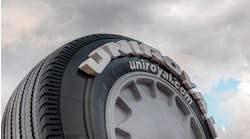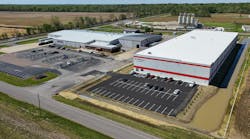Before the 2018 Specialty Equipment Market Association (SEMA) Show began, the association's Wheel and Tire Council convened a panel of experts to talk about the three big Ts: tariffs, technology and trends.
Tariffs
Stuart Gosswein, senior director of federal government affairs for SEMA, says the association supports fair trade, but “the tariffs are going in the wrong direction.” Plus, he says the tariffs imposed by President Donald Trump over the past year have been implemented on parties who “had no idea they were coming.” Gosswein rather than imposing tariffs, such as the steel duties that have been assessed on steel from nearly every country, the association believes a better solution is to address the problem of Chinese imports. But Gosswein acknowledged the difficulty in doing that, especially as Trump continues to push more tariffs. The same day the Wheel and Tire Council panel spoke on the issue, Bloomberg reported the U.S. government plans to impose yet another round of tariffs on $257 billion worth of Chinese imports if the high-level trade talks between Trump and Xi Jinping fail. That new dollar amount would be on top of the tariffs already leveraged on $250 billion of imported goods.
“The president believes this brings our trading partners to the table, but that’s not happening,” Gosswein said.
John Healy, a managing director and research analyst for Northcoast Research Holdings LLC – and Modern Tire Dealer columnist – says the tariffs, along with a 10% rise in raw material costs, have increased prices by 30% in the last year.
Myles Kovacs, whom WTC Chairman Gregory Parker introduced as someone who “has probably designed more wheels than any person living,” has a background in the fashion industry. He expects the tire and wheel industry to respond like fashion did years ago. Production will move to countries outside the control of tariffs, and the industry will find ways to lessen the financial impact of tariffs. In fashion, Kovacs says, it’s less expensive to import clothing that’s sprayed and designed to be waterproof. Thus, there are more waterproof items available.
The big question on tariffs is this: what comes next? Gosswein provided a straightforward answer: “I don’t have the foggiest idea.”
Technology
Healy suggested that the advancement of new technologies in tires and tire pressure monitoring sensors has made motorists safer, and more aware of their tires, and the need to maintain them. But it’s also led to a downturn in the replacement market, he says.
“I think the next wave of technology will be on the fleet side,” Healy says.
Tyson Boyer of Dill Air Controls Products says the complexity of vehicles has already required that tire dealers upgrade their equipment. Alignment equipment that’s 10 years old isn’t suitable for a standard four-wheel alignment. But the good news is there are partnerships emerging to address the changes. They feature both traditional and new parties – including medical companies familiar with imaging who are focusing on the images and impressions of tires.
Trends
In wheels, Kovacs says the outlook is for bigger and wider wheels, different finishes and wheels made of different materials. Each new innovation brings in partners from other areas of the world – India, Vietnam, China and Europe are already in the game. He says when it comes to plastics there are products coming from Russia.
Healy says millennials’ view of vehicle ownership is “very different” from older generations, and it will have an effect on the marketplace. But at the same time, a transition from individual owners of personal cars to fleets owning and operating cars for consumers “creates more miles driven,” which leads to the need for more replacement tires, and that’s “a boost for the industry’s outlook.”
But the pressure at the retail level isn’t going away, Healy says. “I think people want to shop at fewer places, not more places.” So he sees the convenience factor as key for consumers who might research tires online, but ultimately buy them and have them installed at Costco while they shop.
Kovacs still sees a place for brick and mortar – “if it’s a niche product that Walmart doesn’t sell.” He pointed to the fact that major home improvement chains sell paint, but there are still standalone, specialized stores that sell paint, too.




